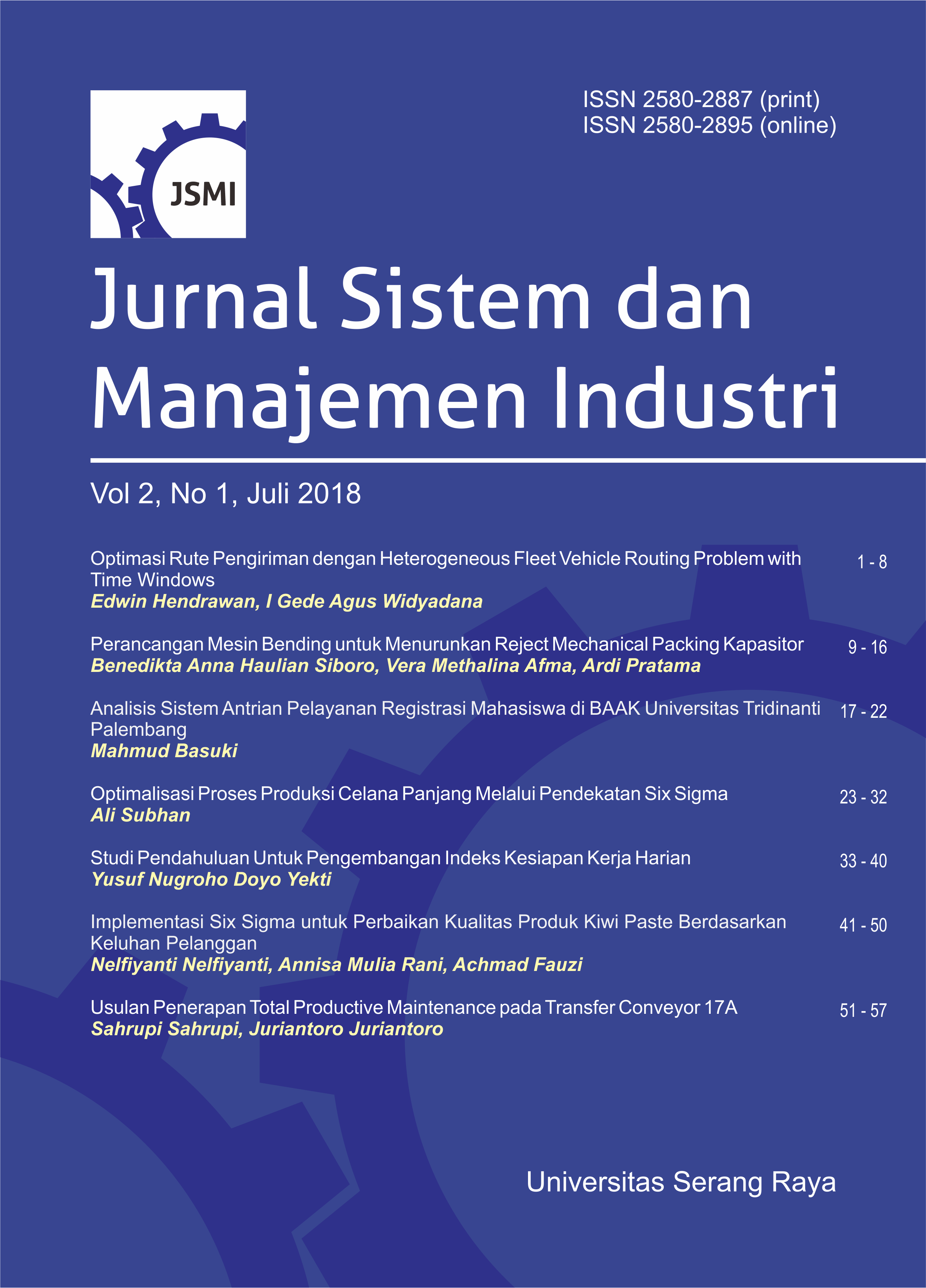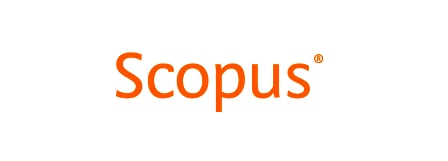Optimalisasi Proses Produksi Celana Panjang Melalui Pendekatan Six Sigma
DOI:
https://doi.org/10.30656/jsmi.v2i1.559Keywords:
Oblique Belt Loop Defects, Quality Increasing, Six Sigma, Skid Jump DefectsAbstract
PT. Tainan Enterprises Indonesia branch of Cianjur produce various kinds of garment products. One of the most widely product is trousers. The product are still many defects. This is showed from the number of defective products during February 2015 until mid-March 2015 which reached 509 products unit of 10.138 trousers produced. Therefore, appropriate quality control is required to optimize the quality of trousers products. This research method uses Six Sigma approach with DMAIC cycle (Define, Measure, Analyze, Improvement, Control). Based on the results of the research is known the most dominant type of defect is oblique belt loop and skid jump defects. Factors causing of oblique belt loop defects are sourced from human factors (operator does not follow signs and operators are fatigue), engine factor (old machine age and engine setting less than perfect), material factor (needle material less reliable and materials need to be heating which is high), and the method factor (information on working methods is still lacking). While the factors causing of skid jump defects are sourced from human factors (operator is less careful in choosing to sewing needles and operators experience fatigue), machine factor (old machine age and no regular machine maintenance), material factor (needle less reliable sewing), and method factors (production supervision and quality control are still weak). Quality Increasing could be can increase the value of Six sigma from 3.82 to 4.27.
Downloads
References
V. Gaspersz, Lean Six sigma for Manufacturing and Service Industries. Jakarta: PT Gramedia Pustaka Utama, 2011.
J. Antony, R. Banuelas, and G. Knowles, “Implementing six sigma,” IEEE Control Syst., vol. 21, no. 1, pp. 181–185, 2001.
M. A. Sayid Mia, M. Nur-E-Alam, F. Ahmad, and M. Kamal Uddin, “Footwear Industry in Bangladesh: Implementation of Six Sigma Methodology,” Ind. Eng. Manag., vol. 6, no. 211, pp. 316–2169, 2017.
S. Supriyadi, G. Ramayanti, and A. C. Roberto, “Analisis Kualitas Produk dengan Pendekatan Six Sigma,” in Prosiding SNTI dan SATELIT 2017, 2017, pp. 7–13.
J. Antony and R. Banuelas, “Key ingredients for the effective implementation of Six Sigma program,” Meas. Bus. Excell., vol. 6, no. 4, pp. 20–27, 2002.
C. Trihendradi, Statistik Six Sigma dengan Minitab: Panduan Cerdas Inisiatif Kualitas. Yogyakarta: ANDI, 2006.
S. Supriyadi, G. Ramayanti, and Y. Aditia, “Analisa Kualitas Precious Slag Ball dengan Pendekatan Six Sigma,” in Proceedings Seminar Ilmiah Nasional, 2017, pp. 45–58.
I. Khomah and E. S. Rahayu, “Aplikasi Peta Kendali p sebagai Pengendalian Kualitas Karet di PTPN IX Batujamus/Kerjoarum,” J. Agribus. Rural Dev. Res., vol. 1, no. 1, pp. 12–24, 2016.
R. Rosihin, L. M. Ulinnuha, and D. Cahyadi, “Analisis Pengendalian Kualitas Super Absorbent Polymer Dengan Menggunakan Metode Six Sigma,” J. Sist. dan Manaj. Ind., vol. 1, no. 1, pp. 19–28, 2017.
P. Soetjitro, “Instrumen Total Quality Management (TQM) sebagai Pilihan Alat Pengendalian,” Value Added Maj. Ekon. dan Bisnis, vol. 6, no. 2, pp. 49–60, 2010.
M. J. Shofa and H. Gunawan, “Implementasi Six Sigma untuk Perbaikan Produk Nickel Pig Iron,” J. Sist. dan Manaj. Ind., vol. 1, no. 1, pp. 29–34, 2017.
A. Kusumawati and L. Fitriyeni, “Pengendalian Kualitas Proses Pengemasan Gula Dengan Pendekatan Six Sigma,” J. Sist. dan Manaj. Ind., vol. 1, no. 1, pp. 43–48, 2017.
J. De Mast and J. Lokkerbol, “An Analysis of The Six Sigma DMAIC Method from The Perspective of Problem Solving,” Int. J. Prod. Econ., vol. 139, no. 2, pp. 604–614, 2012.
L. D. Dharmawan and Y. Ekawati, “Peningkatan Kualitas Knalpot Pada Pt Fajar Indah Menggunakan Metode Six Sigma,” J. Tek. Ind., vol. 15, no. 2, pp. 112–123, 2016.
Downloads
Published
Issue
Section
License
All articles in Jurnal Sistem dan Manajemen Industri can be disseminated provided they include the identity of the article and the source of the article Jurnal Sistem dan Manajemen Industri. The publisher is not responsible for the contents of the article. The content of the article is the sole responsibility of the author
Jurnal Sistem dan Manajemen Industri is licensed under a Creative Commons Attribution-NonCommercial-ShareAlike 4.0 International License.
















1.png)
.png)
.png)
.png)


